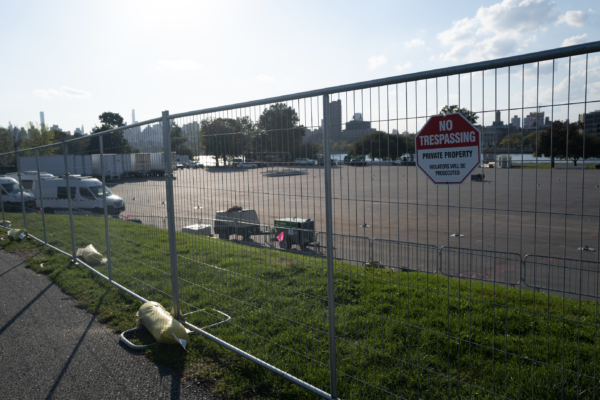With the influx of a large number of undocumented immigrants into New York City, the city government has set up multiple large-scale detention facilities throughout the city to accommodate them. However, this has also sparked tensions between undocumented immigrants and local community residents. Randall’s Island, where a large tent camp is located, serves as a concrete example of this situation. Surrounding community residents complain that the park green spaces are being encroached upon by immigrants, who bring disorder and even crime. On the other hand, immigrants complain that the community holds prejudiced views against them, and even practices racial discrimination.
According to a report by Gothamist news website, Randall’s Island is a relatively remote area with a large park, homeless shelters, immigrant tent camps, and other government buildings. East Harlem in Manhattan is just a stone’s throw away from Randall’s Island, connected by the Ward’s Island Bridge. Residents of East Harlem used to cross the bridge to the island’s parks for leisure activities. However, since the immigrant tent camps were set up in August last year, immigrants have been gathering in groups on the riverside grass or setting up stalls to make money, encroaching on residents’ leisure space. With the occurrence of a shooting incident in July and the lack of maintenance and cleanliness around the tent camp, the amount of garbage has piled up. As a result, residents of East Harlem are less inclined to visit the island.
Recently, a series of immigrant-related criminal incidents have occurred on Randall’s Island and throughout the city. In January of this year, there were two stabbing incidents in the immigrant tent camp on the island, resulting in one fatality. In the following months, additional violent altercations occurred. In July, a Venezuelan immigrant woman was shot near the tent camp, followed by a man being stabbed two weeks later. These criminal events have heightened public concerns. However, according to New York City Police Department data, while major crimes such as assaults and robberies on Randall’s Island have more than doubled from 44 cases during the same period last year to 102 cases so far this year, with an increase of 2,000 to 3,000 immigrants on the island, the per capita crime rate has not risen.
Undocumented immigrants, on the other hand, express grievances that local residents frown upon them upon sight. A Dominican immigrant told Gothamist that he believes many prejudices against immigrants are rooted in racism. Another immigrant from Venezuela complained that the tent camp resembles a prison; although they are grateful for having shelter, the overcrowding, unpalatable food, and disrespect from security guards have made their stay difficult. With incidents of theft and fights being common, some immigrants prefer to spend most of their time outside the tent camp to avoid potential theft.
Many immigrants also accuse community residents of not understanding their plight. They have fled persecution or political turmoil in their home countries and have come here solely for survival. Their ultimate goal is to move out of the shelters, with most waiting for permission to work legally, which according to federal regulations, requires a minimum waiting period of six months for political asylum seekers. Other Venezuelan immigrants also state that they do not bring violence into the United States; they simply want to work and earn a living.
In May of this year, the Randall’s Island Park Alliance threatened to sue the city government, arguing that immigrant detention facilities should not be located on the island, as it has led to a reduction in leisure spaces and unfairly affects the residents there. In light of safety concerns, the city government recently intensified patrols and security near the tent camp and relocated around 800 immigrants to other locations. Mayor Adams acknowledged the various issues with the large tent camps and expressed a desire to reduce their scale. However, finding suitable alternative locations for setting up immigrant shelters continues to face resistance from other community residents.

